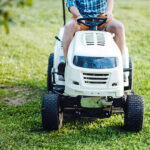Returning to the stage after cubital tunnel syndrome

Bruno Silva can’t imagine his life without music. He has been playing bass guitar since he was 12 years old and performs at least once a week, often more. Born in Japan to Brazilian parents, Bruno has lived and performed in England, Brazil, Spain and the United States. He started out playing along to bands like Metallica and Megadeath. Then he found jazz and has focused on that style of music ever since.
Like many performing artists, Bruno is as dedicated to his calling as any high-performance athlete. “I practice for three to four hours every day,” he says. “My playing wouldn’t be up to par if I didn’t commit to daily practice.”
The pursuit of excellence, however, can lead to overuse injuries. Bruno was about to enter the Berklee College of Music when he started feeling pain in his left wrist whenever he played. Despite physical therapy, the pain grew worse over the course of the next year, making it harder and harder to play.
Cubital tunnel syndrome: A common problem for musicians
In addition to their reputation as the coolest members of their bands, bass players share a common injury. Cubital tunnel syndrome — compression of the ulnar nerve at the elbow — affects bass players at a higher rate than other musicians. On its way from the shoulder to the wrist, the ulnar nerve passes through a small channel in the elbow called the cubital tunnel. Continuous pressure or stretching of the ulnar nerve can lead to cubital tunnel syndrome.
“Playing the bass requires both wrist flexion and elbow flexion,” explains Dr. Andrea Bauer, a pediatric orthopedic surgeon in the Performing Artist Athlete Program at Boston Children’s. “Holding this position for long hours can strain the nerve. Eventually, players’ fingers may feel numb, they may lose hand strength and their forearms become painful.”

For Bruno, the most serious symptom was pain. Throughout his first three semesters at Berklee, he worked with doctors in the Sports Medicine Division. But his tireless practice, combined with a love of rock climbing and weight lifting, continued to irritate his ulnar nerve. “By the winter of 2016, I couldn’t play my bass for more than 10 minutes at a time without incredible pain.” Bruno was 24 and even using a fork and knife started to cause him pain.
When the pain in Bruno’s wrist did not ease up, he met with Dr. Bauer to discuss surgery. By this time, Bruno’s options were clear. “It wasn’t like surgery was a decision,” he says. “I had to do it. As a musician, not having use of my arms was not a reality I was willing to face.”
Bruno and Dr. Bauer settled on a plan. Dr. Bauer would perform a procedure known as ulnar nerve transportation. Essentially, she would move the ulnar nerve out of the cubital tunnel in the elbow. She would also perform a Guyon’s canal release, which would release the nerve at the wrist and minimize the chance Bruno would need another surgery in the future.
Hands on the strings
Timing worked in Bruno’s favor. His surgery coincided with the end of summer semester, and he was on break for the following two weeks while his arm was in a sling. It was another three weeks before he could play his bass but he knew the procedure had been a success. “I could use a fork and knife again so I could tell I was better.”
Within five weeks of surgery, Bruno was playing bass as well as he ever had and making plans for a semester in Valencia, Spain. Today, he’s back to practicing three to four hours a day and looking ahead to a career working with organizations that produce concerts and music festivals. “I would love to be a professional musician, but I don’t think that will be my main source of income,” he says. “Nonetheless, I intend to play as long as I can.”
Learn about the Hand and Orthopedic Upper Extremity Program at Boston Children’s Hospital.
Related Posts :
-

Ask a sports medicine specialist: Why are ACL tears so common among female athletes?
When an athlete is sprinting after an opponent who suddenly stops or changes direction, their anterior cruciate ligaments (ACLs) make ...
-

Forging a path back to school after orthopedic trauma
Orthopedic trauma can force children to miss school, sometimes for an extended period. But even when patients have regained enough ...
-

Jackie’s dreams of playing professional soccer back on track after ACL surgery
From her dorm in Newcastle, England, Jackie Zapata can hear fans roaring in the soccer stadium a few blocks away. ...
-

What orthopedic trauma surgeons wish more parents knew about lawnmower injuries
Summer is full of delights: lemonade, ice cream, and fresh-cut grass to name a few. Unfortunately, the warmer months can ...





